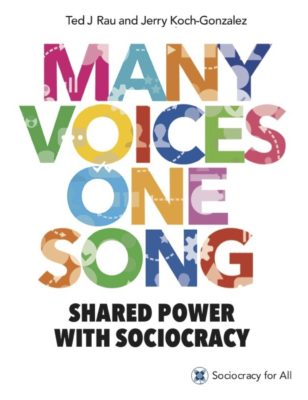The words holon and holarchy were created by Arthur Koestler in The Ghost and the Machine, published in 1967. Koestler used holon to describe natural organisms as composed of semi-autonomous sub-wholes linked in a form of hierarchy, a holarchy, to form a whole.
Holons
A biological organism is not an aggregation of simple parts but of other organs that are both independent and dependent. Biological holons are self-regulating, open systems that display both the autonomous properties of wholes and the dependent properties of parts.
Holarchy
The suffix ‘archy’ means a rule or a government. Holons are arranged in a hierarchy linked by a system of communication and control more accurately called a holarchy rather than a hierarchy. A hierarchy by definition has a top and a bottom but the relationships between holons are not so clearly top to bottom or bottom to top.
The “hierarchical relationship” between holons is that holons at one level are “made up of, or make up” the holons or parts of another level. The parts only exist as they are integrated to create the whole and the whole’s definition is that of the parts.
Wikipedia: The “hierarchical relationship” between holons at different levels can just as meaningfully be described with terms like “in and out”, as they can with “up and down” or “left and right”; perhaps more generally, one can say that holons at one level are “made up of, or make up” the holons or parts of another level. This can be demonstrated in the holarchic relationship where each holon is a “level” of organization, and all are ultimately descriptive of the same set. The top can be a bottom, a bottom can be a top, and, like a fractal, the patterns evident at one level can be similar to those at another.
David Spangler: In a hierarchy, participants can be compared and evaluated by position, rank, relative power, seniority, and the like. But in a holarchy each person’s value comes from his or her individuality and uniqueness and the capacity to engage and interact with others to make the fruits of that uniqueness available.
In sociocracy, this is replicated with each level of circles forming the next higher level with their own members. And the next higher circle forms lower circles by assigning an aim, a leader, and allocating resources. The whole exists only as an integration of the semi-independent parts, the higher level also begin defined by the lower.
Arthur Koestler, 1905-1983
A Further Reference
“Some General Properties of Self-Regulating Open Heirarchic Order” (SOHO) by Arthur Koestler is an extensive description of the holon as a self-assertive part that is also integrated into a whole. Originally published as an Appendix to the intervention at the Alpbach Symposium, whose acts were published in 1969 as a book edited by Arthur Koestler and J. R. Smythies with the title Beyond Reductionism. Accessed 22 June 2014.
http://www.panarchy.org/koestler/holon.1969.html
Categories: History and Philosophy, Holacracy

